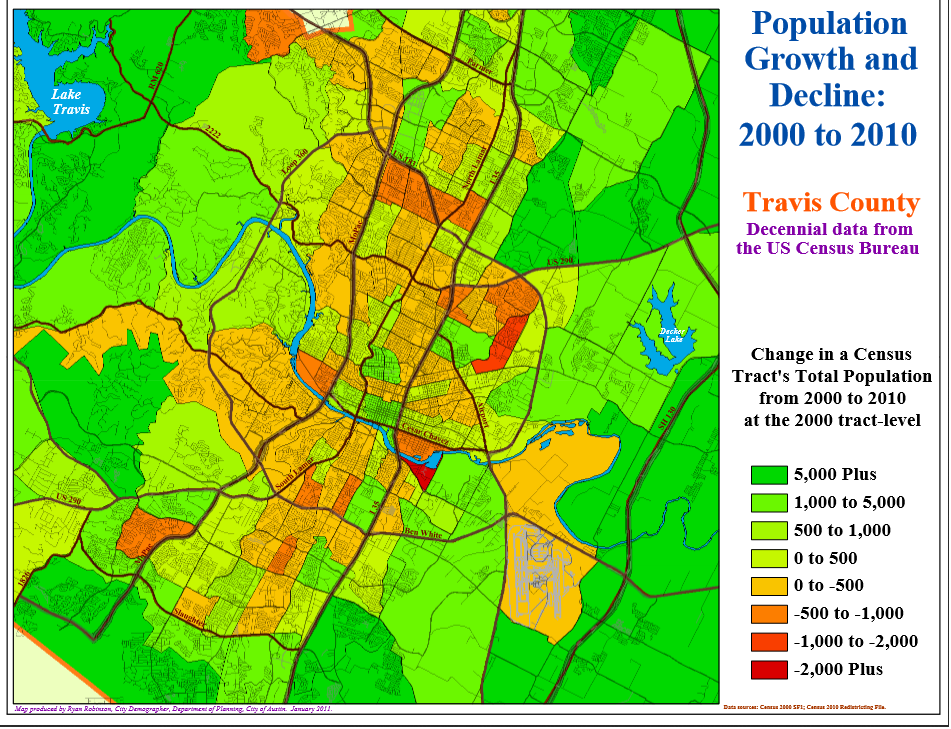The Problem with Austin NIMBYnomics
One of the more exasperating aspects of debating Austin's housing supply is the confused economic assumptions of Austin NIMBYnomics. Specifically, there is a troubling blindspot about the economic reasoning that guides the humans that build and refurbish housing.
Often, developers are described as ‘greedy’ (which is a way of saying they are making too high a profit relative to the externalities they produce). Interestingly, many anti-development advocates believe that the same ‘greedy’ developers that produce certain types of development (‘stealth dorms’, large high rises) will recalibrate and build the ‘right kind’ of multi-family if we just place enough constraints on what they can do.
The main Austin housing problem is that there are not enough places in the core to build multi-family without regulatory and political risk. So, we get a "missing middle" of housing development.
 Image courtesy of Opticos Design
Image courtesy of Opticos Design
This in turn means population loss in the core as those with more disposable income (e.g. professional couples with no kids, older residents without children) outbid families with kids in the core.
Tragically, the housing types in the "missing middle" are exactly what many of the anti-development advocates allude to as being the outcome they would like. In their view, the preferred solution is to regulate the market enough to narrow the options available to the developers so that they get to work on creating housing the Austin NIMBY coalition would like. For example, here’s the Daily Texan echoing anti-development advocates in its endorsement of lower occupancy limits:
Right now, it’s cheaper for developers to build stealth dorms on single-family zoned property than to build true, high density multi-family housing, which by law must include adequate parking, dumpsters for trash, sprinkler systems and other amenities. This amendment will effectively eliminate the financial incentive to build stealth dorms and will, in turn, encourage developers to invest in building on upzoned properties that are suited for high-density housing.
The assumption is that the actual humans that are proficient at redeveloping a single-family house or duplex to accommodate a lot of roommates is going to be good at navigating the process for missing middle, low-unit multi-family. This is a flawed assumption.
For starters, even anti-development advocates concede that there's limited capital appetite for this type of development. The small operators are unlikely to have enough personal capital to take on the missing middle type developments. Perhaps it is possible that they will reset their skills and find new sources of financing somewhere. But, my intuition is that they will instead just remodel houses for the most affluent buyers or most affluent renters they can fit within the occupancy limit. That’s easier money than trying to sell capital, neighbors, and regulatory officials on missing middle housing. This by the way, is the empirical reality and precisely why we don’t have the missing middle. These small-time developer folk are greedy after all, so why are they going to take on risk when there are simpler ways to make money? Some might just exit and pick stocks or invest in franchises and so on.
Now, let’s consider the other side of the spectrum. The different development firms and sources of capital that produce large complexes certainly have the skills and money to tackle the missing middle. But why don’t they? Well, because there’s not an attractive ROI in it, obviously. If you are going to take on development risk, why do it for some relatively minor project? If you are a leader at such a firm, you still have to make time in your schedule for selecting designs, meeting with capital, dealing with the politics whether the project has 1x units or 5x units. So, it makes sense to go for 5x.
Even worse for the NIMBY argument, the capital providers have many, many options. Capital can fund sprawling developments in our region (and boy, does it!) or skip it altogether. Whereas the skills of a large developer might make it consider going down to the missing middle, capital isn’t locked in that way. It’s happy to lend to sprawl or luxury or even cycle out of the real estate asset class. So sure, the ‘California Developers’ might have to hustle a little harder to find some new ways of making money and consider building some of the Austin missing middle, but CalPERS and Wells Fargo don’t care. They’ll just fund something else. Sadly, if capital skips Austin, we are stuck with less housing.
Markets are productive but temperamental beasts. As a progressive, I feel just fine launching market interventions to ensure that markets work or achieve my personal preferences in terms of fairness. So, my concern about Austin NIMBYnomics is not about a normative objection; intervention in the market is acceptable to me. Rather, it’s a design issue.
The problem with Austin NIMBYnomics is that there are not currently enough human beings or sources of capital interested in building an Austin "incremental growth" vision given the policy and aesthetic design preferences of our city's anti-housing activists. Do I absolutely love the architecture of every 'stealth dorm', or the interaction of every high rise with its surrounding environment? Do I cherish the sounds of construction in my neighbhorhood? Well, no. But I find sprawl and the unnecessary immiseration of every Austinite - including the most vulnerable working poor - much, much worse.
The market design being kluged together by anti-housing forces through their policy victories at council is failing to build adequate supply that produces widespread housing affordability. It contributes to sprawl. It’s not likely to generate new types of developers or sources of capital that can produce the missing middle. As long as the region grows, development will continue: large buildings in corridors, demolitions of old houses to build the most expensive detached-homes the market will clear, and even more sprawl. That doesn’t seem like the best way to preserve Austin’s character.
A proper, market-friendly solution would require easier, by-right duplex, quadplex, and "granny flat" development in neighborhoods near the core. Additionally, solving Austin's housing needs requires reforming existing parking requirements, as well as broader liberalization of the land development code to facilitate incremental density and better street grids throughout the city. There might be a place for supporting smaller developers in upgrading their skills and professional connections to take on missing middle approaches. In addition to these market design options, an effective "social democratic" response would focus on creating a publicly-governed, non-profit "missing middle" housing development corporation and tax Austinites to fund development if private capital continued their disinterest in building those types of developments. And it goes without saying that we need to optimize the allocation of our scarce transit resources to support housing development that is dense, and not car-dependent.

